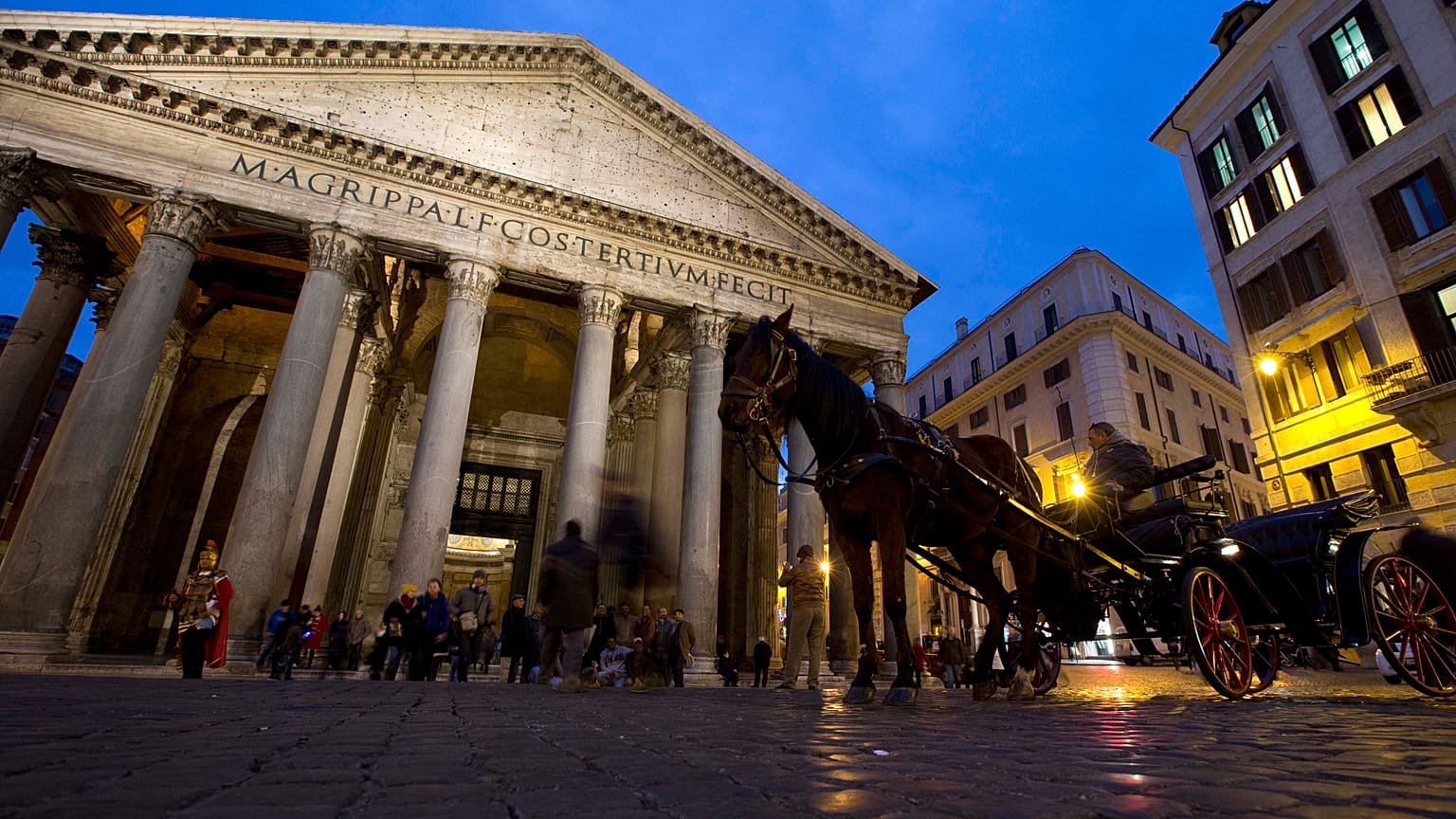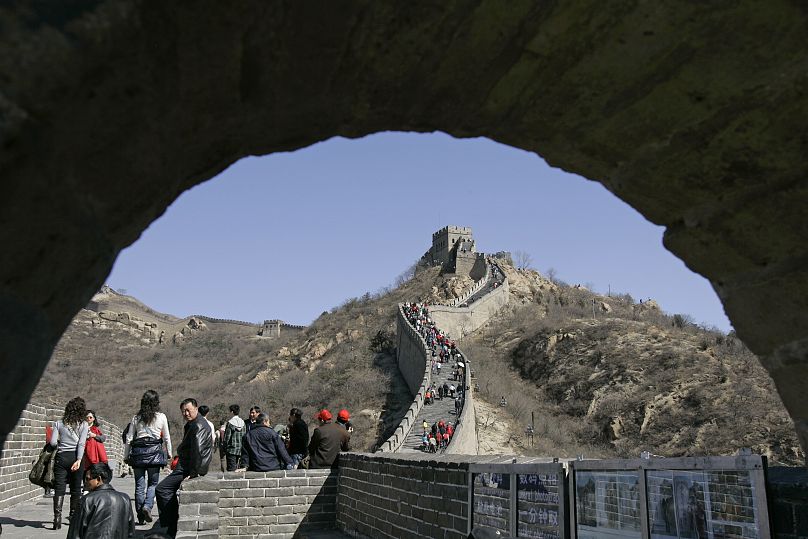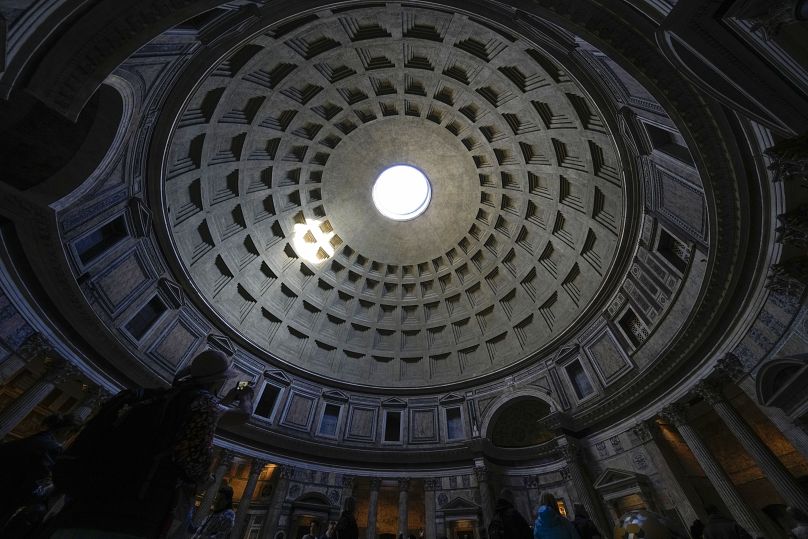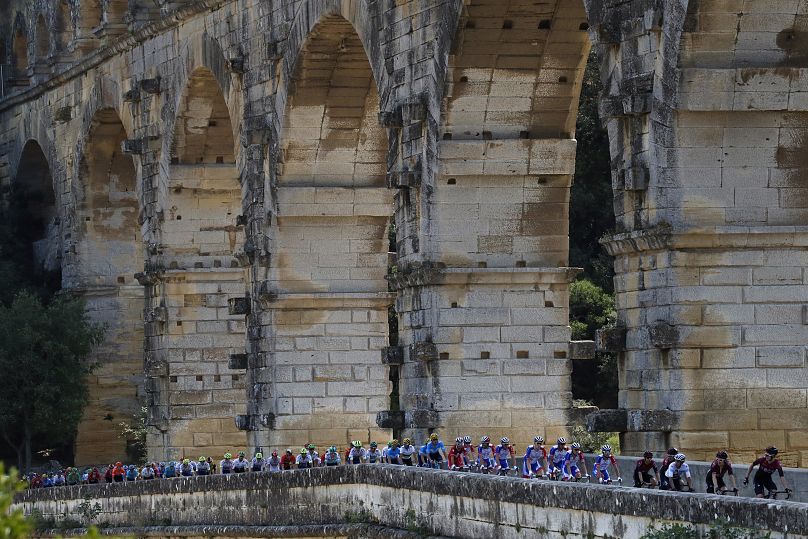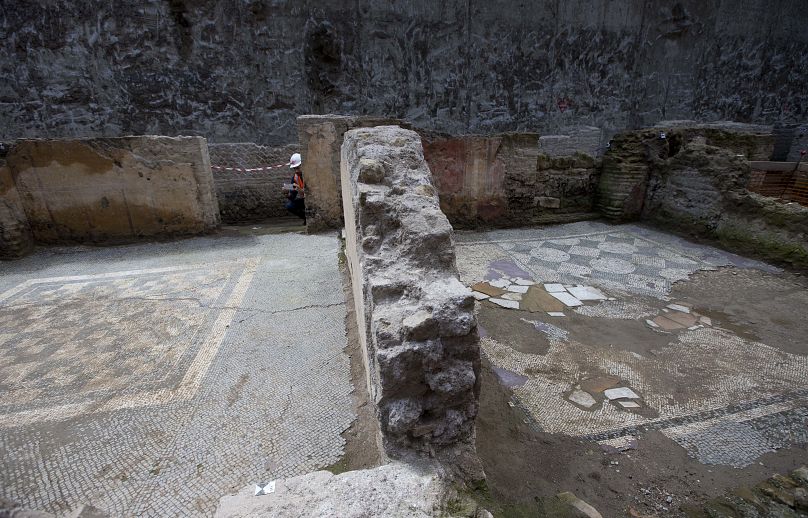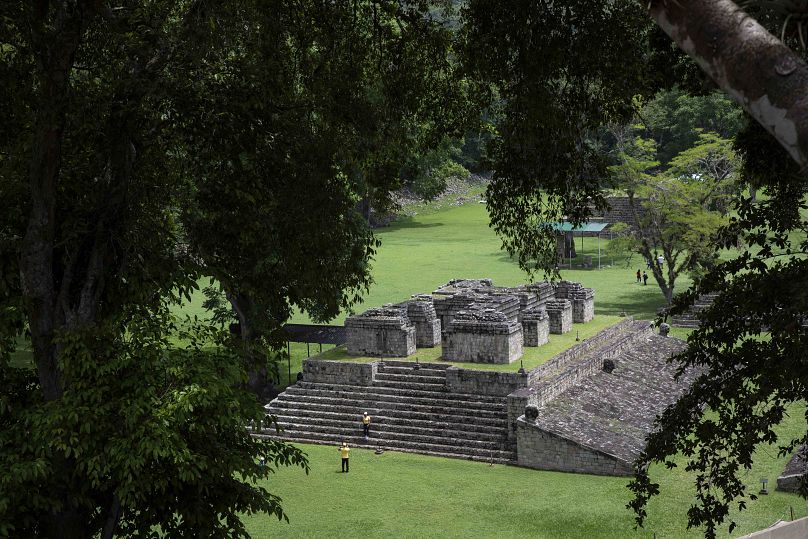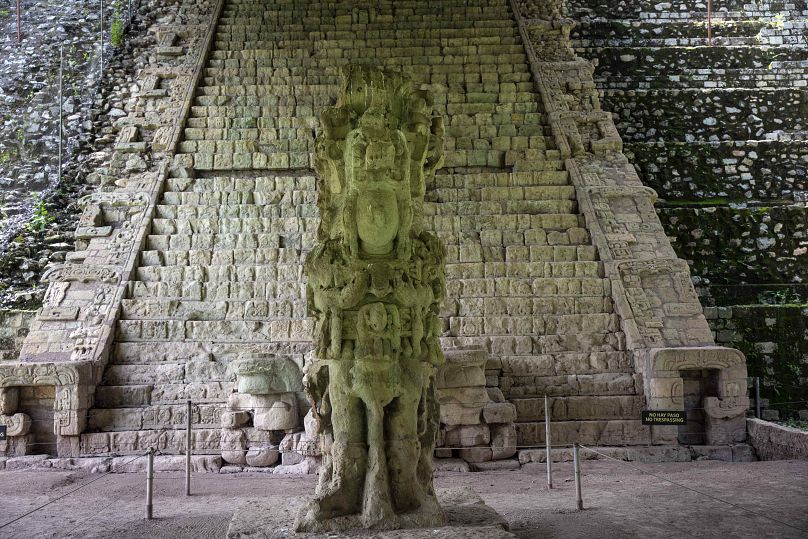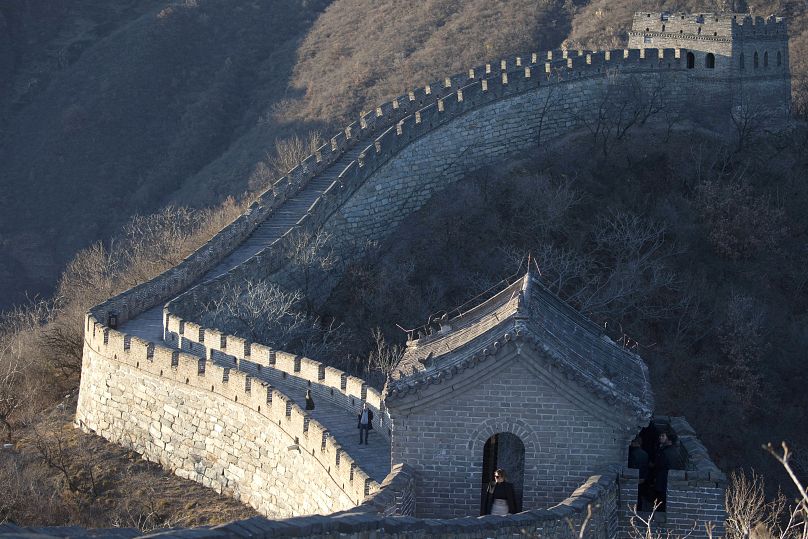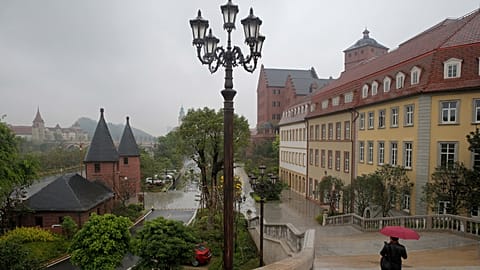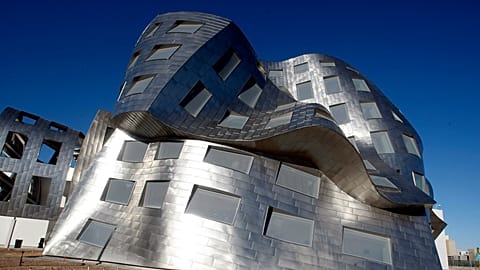Structures built by ancient civilisations are still standing thousands of years later. Could they hold secrets to help us build more sustainably?
The pyramids in Egypt, the coliseum in Rome, the Great Wall of China - just a few of the wonders of the world that have been standing for thousands of years. They’ll probably remain long after we’re all dead and buried.
However if you take a stroll through any major city in the world you’ll see dozens of buildings that are nearing their end while some of their architects are still alive. The concrete that makes up much of our modern structures has a lifespan of only 50 to 100 years.
So why does it seem like humans of the past were so much better at building things to last than we are?
Researchers around the world have been trying to answer that question by looking into the distant past to draw lessons that could help us build better in the future.
A growing number of scientists have been studying materials from long-ago eras – chipping off chunks of buildings, poring over historical texts, mixing up copycat recipes – hoping to uncover how they’ve held up for millennia.
Their findings have been surprising: An eclectic list of ingredients has been found mixed into old building materials – like tree bark, volcanic ash, rice, beer and even urine.
Amusing as it seems, these unexpected additions could hold the key to ancient monuments’ longevity, giving them the ability to get stronger over time and even “heal” cracks when they form.
The implications for this research could be massive for future buildings, especially as calls multiply for construction to become more sustainable and ecologically-friendly.
A recent UN report estimates that the built environment is responsible for more than a third of global CO2 emissions, with cement production making up more than 7 percent of those emissions.
“If you improve the properties of the material by using … traditional recipes from Maya people or the ancient Chinese, you can produce material that can be used in modern construction in a much more sustainable way,” said Carlos Rodriguez-Navarro, a cultural heritage researcher at Spain’s University of Granada.
Thinking about the Roman Empire (and its concrete)
Many researchers have turned to the Romans for inspiration. The architects of the Roman Empire began building impressive concrete structures around 200 BCE, many of which have stood the test of time.
Think of the imposing dome of the Pantheon, which remains the world’s largest unreinforced concrete dome; or the sturdy Roman aqueducts that still carry water today.
Even in harbours, where seawater has been battering structures for ages, you’ll find concrete “basically the way it was when it was poured 2,000 years ago,” said John Oleson, an archaeologist at the University of Victoria in Canada.
The difference between Roman structures and our modern ones is the composition of the concrete they’re made from.
Most modern concrete starts with Portland cement, a powder made by heating limestone and clay to super-high temperatures and grinding them up. That cement is then mixed with water, creating a chemically-reactive paste. Chunks of different materials, like rocks or gravel, are added, and the cement paste binds them into a mass of concrete.
Ancient records show that the Roman process of making concrete was similar – builders mixed materials like burnt limestone and volcanic sand with water and gravel, creating chemical reactions that bound it all together.
But Roman concrete has a unique property: it can repair itself over time.
Scientists are starting to find clues as to how that’s possible – the answer would explain how Roman concrete has managed to hold up for thousands of years.
Clever concrete
A recent study from Massachusetts Institute of Technology (MIT) found that chunks of lime that were added to Roman concrete could fuel the material’s “self-healing” abilities. Previously, scientists thought these chunks - which are studded throughout Roman concrete - were a sign that Romans weren’t mixing up their materials well enough.
Admir Masic, a civil and environmental engineer at MIT who led the study, explained that when cracks form in the Roman concrete, water seeps into the mixture and activates the leftover pockets of lime, creating new chemical reactions that can fill in the damaged sections.
Another theory, developed by researchers at the University of Utah, is that the specific volcanic materials Romans mixed into their concrete were helping it repair itself.
Geologist Marie Jackson, an author on the Utah report, said that naturally-reactive volcanic rocks, which builders would collect after eruptions, interact with the elements over time, helping the concrete seal any cracks that may develop.
The ability to keep adapting over time “is truly the genius of the material,” Jackson said. “The concrete was so well designed that it sustains itself.”
A Mayan secret ingredient: Jungle juice
At Copan, a Maya site in Honduras, intricate lime sculptures and temples remain intact even after more than 1,000 years exposed to a hot, humid environment. Recent research suggests the secret to these structures’ longevity could lie in the trees that grow around them.
Researchers met with local masons in Honduras who traced their lineage back to the Mayan builders – they suggested using extracts from local chukum and jiote trees in the lime mix.
So the scientists tried out the recipe: They collected bark, put the chunks in water and added the resulting tree “juice” into the material. They found the plaster they created was especially durable against physical and chemical damage.
Looking closer, the researchers realised that bits of organic matter from the tree juice were incorporated into the plaster’s molecular structure, mimicking strong natural substances like seashells and sea urchin spines.
Other studies have found a plethora of different natural materials mixed into ancient structures, including fruit extracts, milk, cheese curd, beer, and bodily fluids. The mortar that holds up the Great Wall of China and the Forbidden City includes traces of starch from sticky rice.
Survival of the fittest
If this sounds random, it’s because a lot of it very likely was. Cecilia Pesce, a materials scientist at the University of Sheffield in England, says ancient builders would toss just about anything into their mixes, as long as it was cheap and available.
“They would put all sorts of things in construction,” Pesce said. “And now, we only have the buildings that survived. So it’s like a natural selection process.”
But some of the materials seem to be more intentional – like in India, where builders crafted blends of local materials to produce different properties based on their needs.
Thirumalini Selvaraj, a civil engineer and professor at India’s Vellore Institute of Technology, found that in humid areas of India, builders used local herbs that help structures deal with moisture. Along the coast, they added jaggery, an unrefined sugar, which can help protect from salt damage. And in areas with higher earthquake risks, they used super-light “floating bricks” made with rice husks.
“They know the region, they know the soil condition, they know the climate,” Selvaraj said. “So they engineer a material according to this.”
When in Rome, build like the Romans?
Today’s builders can’t just copy the ancient recipes. Even though Roman concrete lasted a long time, it couldn't hold up heavy loads: “You couldn’t build a modern skyscraper with Roman concrete,” Oleson said. “It would collapse when you got to the third story.”
But researchers are trying to translate some of these ancient building techniques to our modern construction language, taking some ancient materials’ specialities and adding them into modern mixes.
Masic is part of a startup that aims to build new projects using Roman-inspired “self-healing” concrete. Jackson is working with the Army Corps of Engineers to design concrete structures that will survive exposure to seawater – like the ones in Roman ports – to protect coastlines from rising sea levels.
Our buildings don’t need to last millennia like the Romans’ did, according to Masic. But by adding 50 or 100 years to our modern concrete’s lifespan, “we will require less demolition, less maintenance and less material in the long run.”















